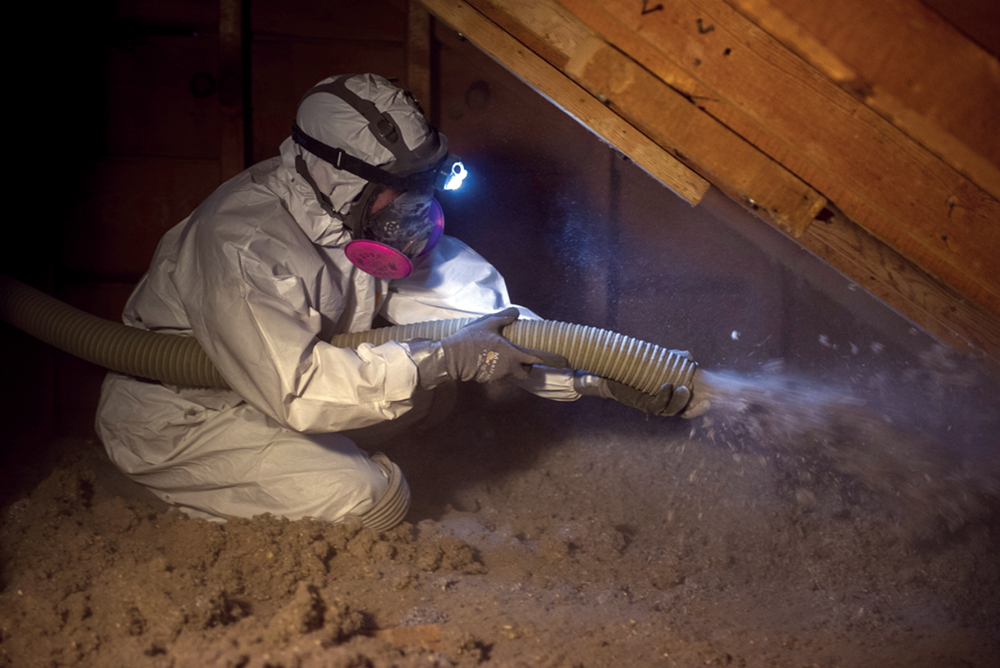By Pat Keegan and Brad Thiessen
Q: We’re dreading winter. It feels like every year, no matter what we do, our home still feels cold and our heating bills go through the roof. We think our home may need more insulation. Any advice before winter hits?
There’s a good chance you are right about the problem. Most older homes, and many newer ones, are not properly insulated, and adding insulation can be a good investment year-round since it can help keep out the summer heat as well.
There are many types of insulation, but I’ll focus on the three most common types in residential buildings: batt, loose-fill and rigid.
Batt insulation can be made with several kinds of fibers including fiberglass and wool. It’s cut to fit between the framing in your ceilings, walls or floors. Loose-fill insulation is made with small pellets or particles. It can be added by hand or blown in by machine into attic floors or exterior wall cavities. Rigid insulation comes in light sheets and is installed against a solid surface like an exterior wall or foundation.
All insulation is measured by its R-value. A higher R-value is more effective. The amount of R-value you need depends on your climate and where the insulation is being added in your home.
If your heating costs are too high, there’s a good chance the attic is part of the problem. Finished attics are usually under-insulated and correcting the problem can be a challenge. If your attic is unfinished, solutions will be simpler and more cost-effective.
You can inspect your unfinished attic, but be cautious. Loose-fill insulation in older homes may have harmful asbestos that you absolutely do not want to disturb. It’s probably best to just poke your head in enough to look around, since it’s easy to damage wiring or ducts, or step through the ceiling.

Courtesy Department of Energy
The attic will likely have loose-fill insulation or batts on the floor. Look carefully to see if the insulation is spread evenly with no gaps or voids. To determine whether there is enough insulation, you can start by researching the recommended amount for your climate. The Department of Energy publishes that information, which you can find at energy.gov/energysaver/weatherize/insulation. After measuring the depth of the insulation, you can calculate the R-value. Different types of insulation have different R-values per inch. If your attic insulation is far short of the recommended levels, you will likely see major energy savings by having a professional add enough to reach that level.
The next place to check is the walls. Many homes built before 1980 have little or no wall insulation, and even newer homes may lack proper insulation. You might be able to see if the walls are insulated by carefully removing an outlet cover.
The most common technique for adding insulation to walls is to have it blown in through holes drilled from inside or outside the home. These holes can be easily patched. An alternative, if the house is being re-sided, is to add rigid insulation to the exterior, underneath the new siding.

Finally, if your floor gets cold in winter, and you have a crawl space, you can install batt insulation between the floor joists. If your home is built on a concrete slab, rigid foam can be installed around the perimeter.
Insulation works great if you choose the right approach and the work is done carefully. Contact the energy experts at your electric co-op for more information about insulation solutions.ν
This column was co-written by Pat Keegan and Brad Thiessen of Collaborative Efficiency. For more information on home insulation, please visit: www.collaborativeefficiency.com/energytips.
Patrick Keegan writes on consumer and cooperative affairs for the National Rural Electric Cooperative Association, the Arlington, Va.-based service arm of the nation’s 900-plus consumer-owned, not-for-profit electric cooperatives. Write to energytips@collaborativeefficiency.com for more information.





